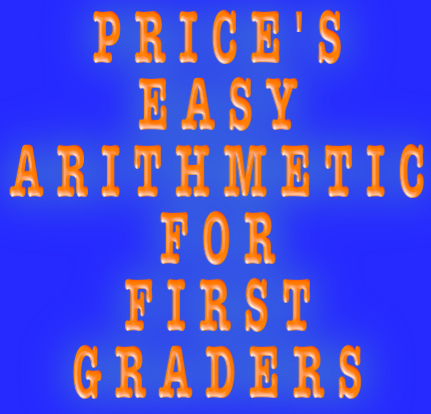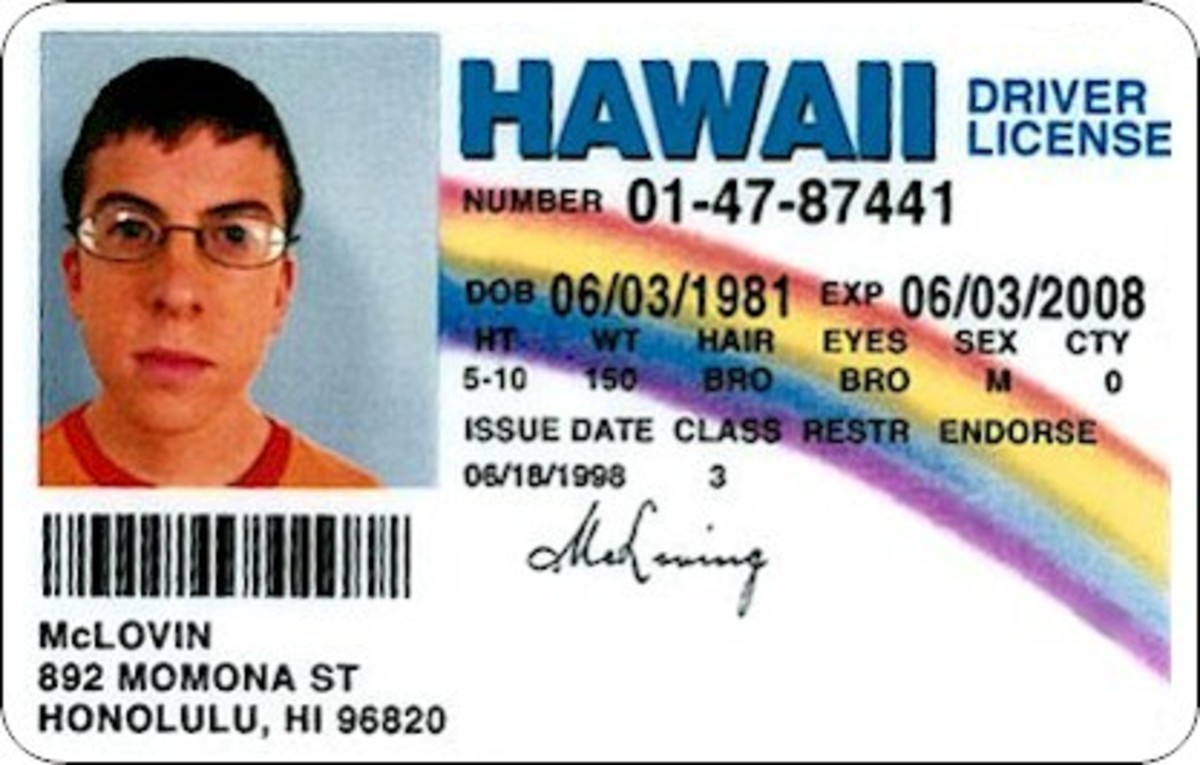“Price’s Easy Arithmetic For First Graders”--The Best and Cheapest Curriculum
INTRODUCTION
New Math, which arrived around 1962, was supposed to be a better way to teach math to young children. In fact, it was complex, cumbersome, and, I can’t help thinking, criminal.
The American people revolted almost instantly against New Math. So it’s not me, the education activist with his bag of complaints. No, New Math was rejected by universal agreement. It was unworkable clutter created, please note, by a consortium of upper-echelon professors, evidently the last people on the planet you should hire for such a task.
One of the most perverse aspects of New Math was the way it drove a wedge between the generations: parents could no longer help children with their schoolwork. I can’t say enough that New Math was a preposterous affront to good sense, and in my opinion could have been devised only by subversives. Fortunately, New Math vanished so fast, it couldn’t do much damage.
Fifteen years later, however, the Education Establishment was back with Reform Math, an umbrella term for a dozen separate curricula. Trouble is, all of them are intellectual descendants of New Math. Indeed, many indignant parents call the new bogus babies “New New Math.” (Some of the notorious names are: MathLand, Connected Math, TERC, Constructivist Math, Chicago Math, Core-Plus).
All of them use one recurring gimmick: they mix simple arithmetic with high-school or college-level concepts. The marketing propaganda says the children will thereby mature quickly in their understanding of math. So you teach children to add 7 + 18 to get to 25, but you do it with the help of set theory, Boolean algebra, base 8, and anything else that might make matters murky. Result: kids can’t get to 25.
One big problem is that Reform Math specifically crusades against mastery. But it makes so sense to teach B, never mind C and D, until kids have mastered A. All you create is confusion. The long-lasting problem is that most kids, having been blitzed and bollixed at the age of 6, 7 and 8, never recover. They can’t add up a simple column of numbers in a restaurant.
Laurie H. Rogers exposes the problem in a blog post, noting that the Law of Primacy states that people tend to draw on the skills they learned first:
“Primacy, the state of being first, often creates a strong, almost unshakable, impression. For the instructor, this means that what he teaches must be correct the first time. For the student, it means that his learning must be correct. Unteaching is more difficult than teaching … The student’s first experience should be positive and functional in preparation for what follows” (“Principles,” 1974, a government publication).
Obviously, teachers of mathematics must do it right the first time, in the most efficient and most precise way possible.

“Price’s Easy Arithmetic For First Graders”
So it is against this backdrop of totally unnecessary and destructive complexity, that I started asking myself a question: how would a clever person teach arithmetic in the simplest, quickest way? I wanted to go as far toward simplicity as the so-called educators went in the direction of chaos and confusion.
An answer finally came to me: you could teach all of first-grade arithmetic with pennies, nickels, dimes, quarters, half dollars, and dollar bills.
You start with five pennies. A few weeks later you work up to ten pennies and two nickels. A few weeks later you add dimes. A few weeks later you introduce the first quarter...All the while the children are learning to add and subtract every possible combination effortlessly and confidently. Little by little, they learn how to write down these combinations. They move slowly and painlessly toward the end of the year when they would be able to pay $4.56 for a toy, receive a discount of $1.83, and know how much they ended up paying.
These are all essential skills that every adult must know; so nothing is wasted. Not only that, most children know half of this arithmetic early on. So they would be learning in greater detail something they already know in a superficial way.
The point is, all my instincts tell me that we ought to keep it as simple as possible, with virtually no abstractions, no jargon, no advanced concepts, no word problems, no nonsense about associativity, place order, and all the other nonsense they teach in Reform Math. The goal is that the slower kids sail along with the faster kids.
If you want to add extra complexity, let the kids play bingo, card games, and dice games. All human beings love card game and dice games, and these are an easy way to teach probability, should you want to. You can teach how many days are in a week, how many seconds are in a minutes--the basic numbers we all have to know.
Now let’s look ahead to the second grade. Think how easy it would be to teach fractions, and then decimals, because ten cents is $ 0.10 and is .10 of a dollar and is 10%. Just different ways of saying the same thing. Similarly, a quarter is 25 cents, and is .25 of a dollar and 1/4 of a dollar and a “quarter” of a dollar. I think most kids, by the end of second grade would be able to understand that $.50 is one-half of a dollar and it’s also 50% of a dollar, given that rock solid foundation that they got in the first grade.
There’s another beautiful thing about using the dollars and cents -- cheap. The Reform Math curricula probably cost 50 bucks a pop. They’re elaborate, expensive, and destructive.
The point of my curriculum is to do elemental things easily, not to roam all over the countryside, as in Reform Math, learning to do 50 complex things poorly. The bigger point of my curriculum is to show the absurdity of using college-level concepts when all you want to accomplish is that children grow up to be comfortable with numbers.
I hope everyone appreciates that this column is more in the nature of a thought-experiment. What would simplicity look like? The so-called experts have carpet-bombed the educational landscape with spurious complexity. I feel there is something quite malevolent about this. You can find on the web the Standards that each state has. Some of this prose is, as my father used to say, like death warmed over. Ever since New Math 60 years ago, the entire field is corrupted. I don't assume you will adopt my "Easy Arithmetic." The goal is to encourage you to design your own. Prune away the worst of the weeds. It's a start.
--------------
See these articles for more analysis of the problem: "36: The Assault on Math" and "53: The Education Establishment Hates Math" on my site Improve-Education.org.
.
What about football fields???
March 7, 2011. I just had an epiphany. Almost every school has a football field, all nicely laid out and divided into 100 units, with markers at the 5-yard line, the-10 yard line, and the 50-yard line. Think of all the arithmetic you can teach with this field-- counting, fractions, and percentages. The dollar bill, the football field--a small and large version of the same thing. Surely these are the two best teaching aids possible. You could put kids in the bleachers; and then have other kids move around on the field to show various operations. The kids can see what 10% is, what two-tenths is, and the rest of it. Can't get to a football field? So find the biggest photograph or best online photo you can. Point is, kids are watching games every weekend. They see the chains moved up and down. They hear about third-down-and-five. The football field is such an obvious and wonderful teaching aid... why do I have the gloomy suspicion that not one school in America uses this technique??? Please, leave a comment if you have seen this Idea in operation.
---FOUR ADDENDA---
I: New Math was so complicated that publishers put out books to help parents understand the glittering nonsense that their kids were bringing home. I ordered two of the books intended to explain New Math (titles: “The ‘New’ Math”; and “Understanding The New Mathematics”), and wrote reviews that are now on Amazon. Surprise: both books published to explain the opacities of New Math are themselves opaque. So we witness this bizarre phenomenon: a textbook on top of a textbook but no ordinary person could understand either of them.
It was these two books that locked in my distrust of New Math. (See review on Amazon.)
II: The evil new development in Reform Math (versus New Math) was the illusion of choice. Instead of one bad idea that parents could discuss and defeat, Reform Math divided and conquered by swamping the public with a dozen complex options. As fast as parents decided one title was bad, they had to waste another few years fighting the next choice.
III: Not enough coins? Search “printable coins” on web.
IV: Finally, the true aim of all proper math instruction is to help children appreciate the purity and beauty of math. 1 + 2 = 3 is a very beautiful thing.
Wikipedia, in an article titled Mathematical beauty, noted that “Many mathematicians derive aesthetic pleasure from their work...Sometimes mathematicians describe mathematics as an art form or, at a minimum, as a creative activity."
Bertrand Russell expressed his sense of mathematical beauty in these words: "Mathematics, rightly viewed, possesses not only truth, but supreme beauty — a beauty cold and austere, like that of sculpture."
PS: Beware Constructivism
One of the big sophistries permeating all modern education is an approach called Constructivism. You find it in history, science, geography, and every other thing including math.
The pitch for Constructivism goes like this: children learn best by experience, by exploring, by creating their own new knowledge. In fact, sometimes it might be helpful.
However, there are many public schools now where teachers are basically paralyzed. They are not supposed to teach any basic information. They are supposed to be facilitators who help children find the facts, somehow. Suppose you want to teach that the ocean between the US and Europe is called the Atlantic. It’s simpler to put a map up on the wall, point to it, make them write the word and spell the word. This takes a minute or two; but it's precisely the simplest route that Constructivism forbids.
In arithmetic, teachers are not supposed to teach that 1+2 equals 3. No, the teacher has to go around the block to communicate what is standing a few feet away.
I strongly recommend that you be aware of how this fad is functioning in your local school. See hub called "Constructivism Is A Bad Idea."








